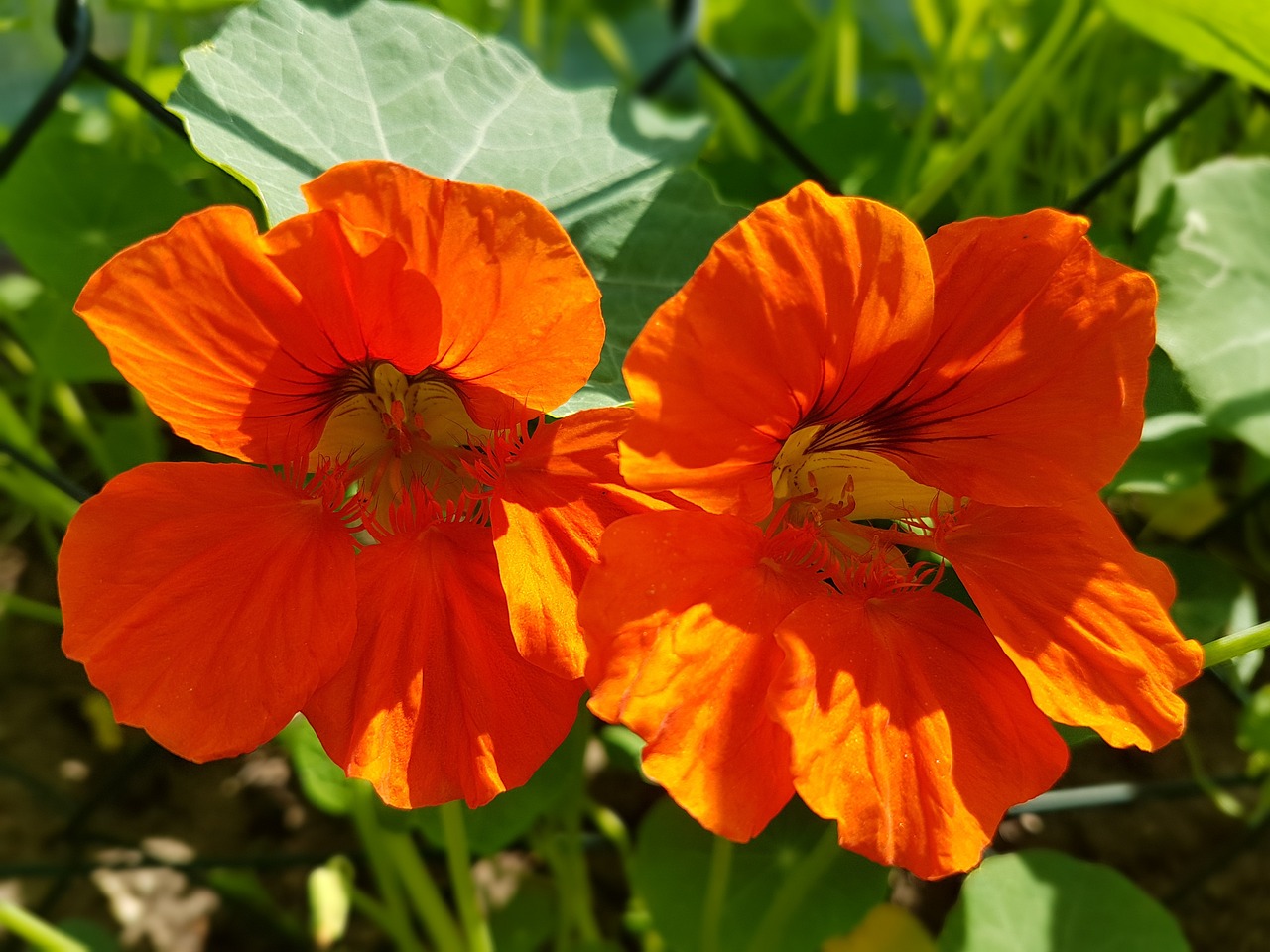
Nasturtiums, with their vibrant blooms and cascading foliage, are a beloved addition to any garden. But beyond their undeniable beauty lies a hidden superpower: their ability to act as companion plants, boosting the health and vibrancy of their neighbors. So, if you’re looking to transform your nasturtiums from solo performers to garden royalty, then keep reading! This guide will unveil the ten best companion plants to elevate your nasturtiums and create a thriving, harmonious ecosystem in your garden.
The Power of Companionship
Companion planting is an age-old practice that harnesses the natural synergy between different plants. By strategically grouping certain species together, you can create a mutually beneficial environment. Nasturtiums, for example, are renowned for their:
- Pest-Deterring Properties: Their strong, peppery leaves repel common garden nasties like aphids, squash bugs, and whiteflies.
- Pollinator Attraction: Their bright blooms attract a swarm of helpful insects like ladybugs and hoverflies, natural predators that devour harmful pests.
- Nutrient-Fixing Capabilities: Nasturtiums, members of the Tropaeolaceae family, have the unique ability to fix nitrogen from the air, enriching the soil for their companions.
Now, let’s delve into the ten best companions to crown your nasturtiums as the reigning stars of your garden!
The Royal Court: 10 companions for Thriving Nasturtiums
- The Fragrant Bodyguards: Herbs
Herbs and nasturtiums are a match made in gardening heaven. Not only do herbs benefit from the pest control prowess of nasturtiums, but the aromatic herbs can further confuse and deter pests with their own unique scents.
- Dill: This feathery friend attracts hoverflies, beneficial insects that love to snack on aphids.
- Chives: Their vibrant purple flowers add a delightful pop of color and attract pollinators, while their mild oniony scent repels some pests.
- Parsley: This culinary essential thrives in similar conditions as nasturtiums and enjoys the protection they offer.
- The Vivacious Entertainers: Beans & Peas
Beans and peas are fantastic companions for nasturtiums. Here’s why:
- Nitrogen Fixers Unite: Both nasturtiums and legumes (beans and peas) have nitrogen-fixing abilities, enriching the soil for each other.
- Climbing Companions: Nasturtiums can act as living supports for climbing bean varieties, creating a visually stunning and productive duo.
- The Royal Allure: Other Flowering Friends
Nasturtiums pair beautifully with other flowering plants, creating a vibrant tapestry of colors and textures.
- Cosmos: These airy beauties share a love for full sun and attract pollinators, further boosting the yield of your nasturtiums.
- Sunflowers: Nasturtiums can act as a living mulch at the base of tall sunflowers, helping retain moisture and suppress weeds.
- Zinnias: These cheerful companions come in a wide range of colors and bloom alongside nasturtiums throughout the summer.
- The Dependable Defenders: Squash & Cucumbers
Nasturtiums play a heroic role in protecting these vining vegetables.
- Trap Crop Magic: Nasturtiums act as a trap crop, attracting squash bugs and whiteflies away from the more vulnerable squash and cucumber plants.
- Ground Cover Powerhouse: Their sprawling foliage shades the soil, helping to retain moisture for these thirsty vegetables.
- The Regal Aides: Tomatoes
While some herbs can be detrimental to tomatoes, nasturtiums are a welcome companion.
- Pest Control Partners: Nasturtiums help deter aphids and whiteflies, common tomato pests.
- Flavorful Fusion: Some gardeners believe that nasturtiums can subtly enhance the flavor of tomatoes, although more research is needed on this.
Remember: When planting nasturtiums with tomatoes, ensure they have adequate space, as nasturtiums can be vigorous growers.
Planting Tips for a Flourishing Court
Now that you’ve chosen your royal companions, here are some tips for a thriving nasturtium kingdom:
- Succession Planting: Plant nasturtiums throughout the growing season to ensure a continuous wave of blooms and pest protection.
- Spacing is Key: Provide enough space between nasturtiums and their companions to prevent overcrowding and competition for resources.
- Deadheading Delights: Regularly deadhead your nasturtiums (remove spent flowers) to encourage continuous blooming.
- Water Wisely: Nasturtiums are moderately drought-tolerant but appreciate consistent watering, especially during hot, dry spells.
Beyond Beauty: The Joys of Nasturtium Companions
The benefits of companion planting with nasturtiums extend far beyond a thriving ecosystem. Here are some additional reasons to embrace this colorful strategy:
- A Feast for the Senses: Nasturtiums are not just visually stunning; both their flowers and leaves are edible! The flowers add a peppery kick to salads, sandwiches, and even cocktails, while the leaves offer a milder, slightly peppery taste perfect for garnishes or adding to dips.
- A Gardener’s Delight: Nasturtiums are incredibly easy to grow. They tolerate a wide range of soil conditions, are relatively pest-resistant (except for the occasional aphid infestation), and thrive in full sun.
- A Sustainable Sanctuary: By attracting beneficial insects and deterring pests naturally, nasturtiums help create a more sustainable garden. This reduces reliance on harsh chemical pesticides, creating a healthier environment for you, your plants, and the local ecosystem.
From Humble Flower to Royal Superstar: The Legacy of Nasturtiums
Nasturtiums transcend their role as mere ornamental flowers. They are powerful allies in the garden, fostering a thriving and vibrant ecosystem. As companion plants, they not only enhance the health and productivity of their neighbors but also add a touch of edible elegance to your culinary creations. So, the next time you plant nasturtiums, remember that you’re not just creating beauty; you’re establishing a royal court, where these glamorous guards protect your garden and reward you with a bounty of benefits.
Bonus Tip: Nasturtiums are also known for their medicinal properties. While more research is needed, some studies suggest that nasturtiums may possess antibacterial and antifungal properties.
With their versatility, beauty, and ecological prowess, nasturtiums are a true gem for any garden. So, embrace the power of companion planting, and let your nasturtiums reign supreme in your flourishing floral kingdom!
